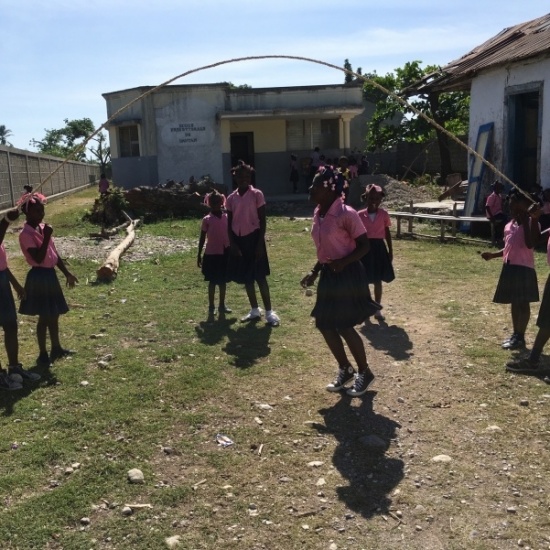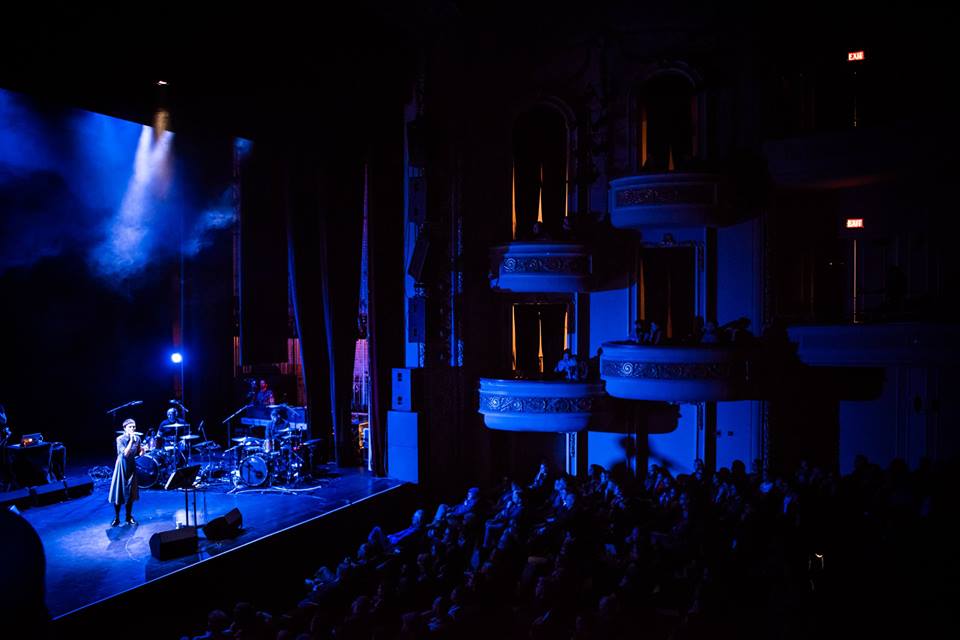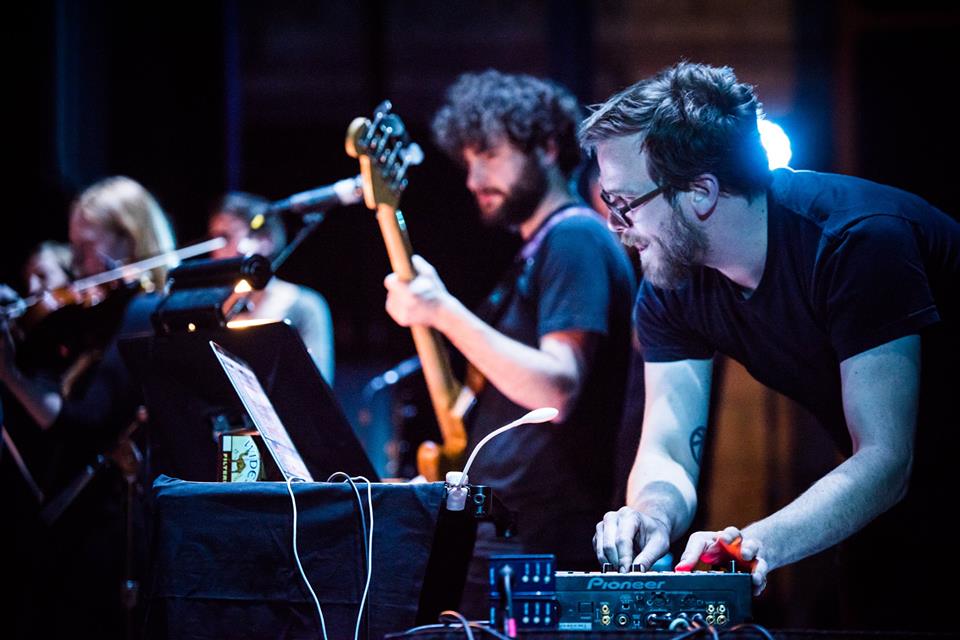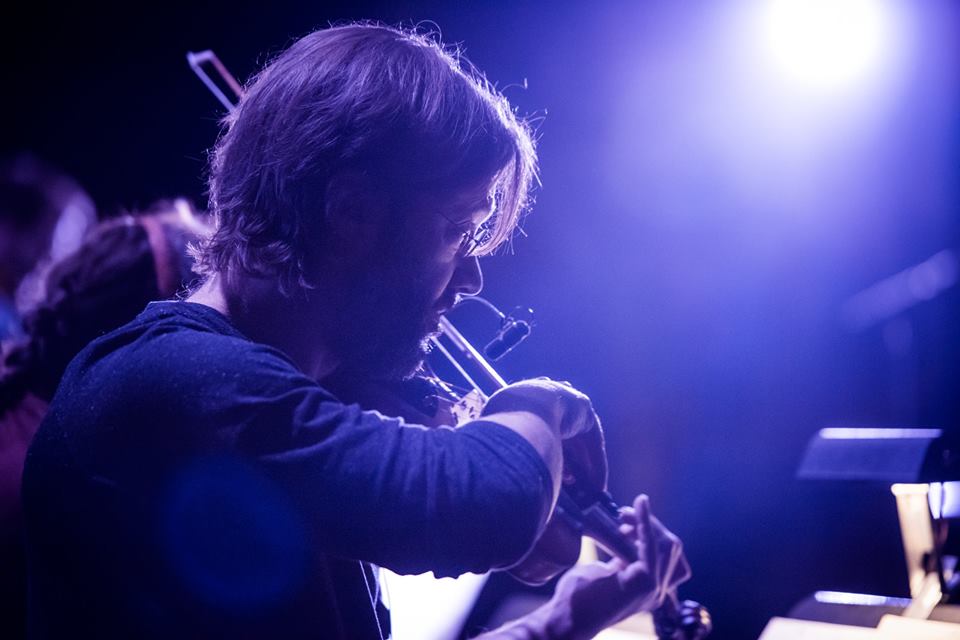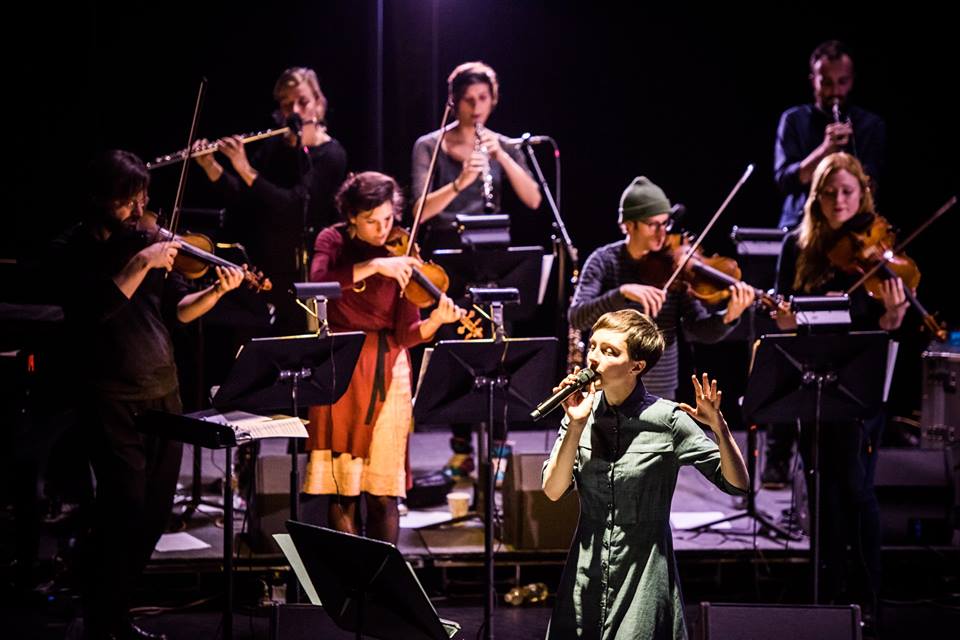by Jeffrey Niblack
In May, Tunde Adebimpe comes to Minneapolis for the world premiere A Warm Weather Ghost, commissioned and presented by Liquid Music, the Walker Art Center and 89.3 The Current. Tunde Adebimpe is perhaps best known as a member of TV on the Radio, but his artistic pursuits extend to acting, directing, animation and visual arts.
A Warm Weather Ghost is conceived of as a hero’s narrative pushed through a psychedelic fever dream, the surreal work unravels and bewilders as a crew of special guest musicians, vocalists, visual art by Adebimpe and narration coalesce into a magically disorienting and unforgettable performance.
Since announcing the project last year, Adebimpe has assembled an impressive lineup of musicians to perform with the project including "Money" Mark Ramos Nishita on synthesizers, guitars and keyboards; Mia Doi Todd on vocals and guitar; and Jaleel Bunton of TV on the Radio on percussion. As the project has developed, he graciously provided us with a small sample of the animation he is working on as part of the performance and answered questions on AWWG's progress.
You've assembled a really impressive lineup of musicians to work with on the project. How did you bring them together? What do you hope they bring to the project?
I’ve been a big fan of everyone involved for a while. I've known Jaleel from TV on the Radio, Mark is a legend, and Mia is one of my favorite singers/songwriters in the world. It came together pretty fortuitously. I ran into Mark at a barbecue and we were talking about what we were up to. I mentioned the project and asked if he’d be interested in working together and he was into the idea. I was looking for a singer to voice one of the characters in the story and Mia was first on the list. I sent some artwork and a rough synopsis to her and thankfully she was into it. Also it turned out that she and Mark are longtime friends which was an added bonus. What they bring to the project is tons of experience and a willingness to play with rough ideas and make them their own.
What has the development process looked like? Have there been challenges? What do the next several months look like for the project?
The development process is pretty much the same for everything I do. It usually starts with writing or drawing until something seems interesting and then I head a little further in that direction to see if the idea has anything else to say. A lot of the ideas/art/music for this project first showed up in 2012 when the band was on a break. When I was approached about doing something for the series, I went through the files and found some ‘Warm Weather Ghost’ pages and thought it’d be a good chance to figure out what they were all about. Most of the music is done and being rehearsed so the next several months will be a lot of drawing/ painting, animating and shooting the visuals.
We're really excited to see how the visuals integrate with the music. Can you give us an update on how the visual components of the project are coming along?
The visuals are coming along pretty well. It’s a lot of work! A lot of very enjoyable work mixed with a lot of “ is there an easier way to do this?” work. But I haven’t found an easy way to do it, so I’m basically locked in a garage building a little trip for the next few months.
What themes are you exploring with the narrative elements of "A Warm Weather Ghost"?
Death and its alternatives.
For those mainly familiar with you through your work in TV on the Radio, how will A Warm Weather Ghost be different musically?
AWWG will have sounds created in the service of one specific visual, so it’s more a live soundtrack (instrumental passages, noise, narration) than a set of songs like we do in TVOTR.
How has the project changed since you first envisioned it?
I have all of the elements of the original ideas, but really, I think I’m still envisioning it. The way everything is coming together still feels really active, so it changes a little bit every day.
AWWG incorporates different facets of your artistic universe – acting/theater, visual art, music, storytelling… Have you ever done a project like this before, that displays so many artistic sides of you in one package?
I’ve made visuals for music videos and soundtracked things, but I’ve never done something where I have to be present and performing and locked in to the visual while it’s running. So mostly I’ll be trying not to wipe out, or figuring out how wipe out in the fanciest way possible.
Tickets for Tunde Adebimpe and A Warm Weather Ghost are available here.
FOLLOW LIQUID MUSIC FOR UPDATES AND ANNOUNCEMENTS:
Twitter: @LiquidMusicSPCO (twitter.com/LiquidMusicSPCO)
Instagram: @LiquidMusicSeries (instagram.com/liquidmusicseries)
Facebook: facebook.com/SPCOLiquidMusic
Podcast: Liquid Music Playlist







